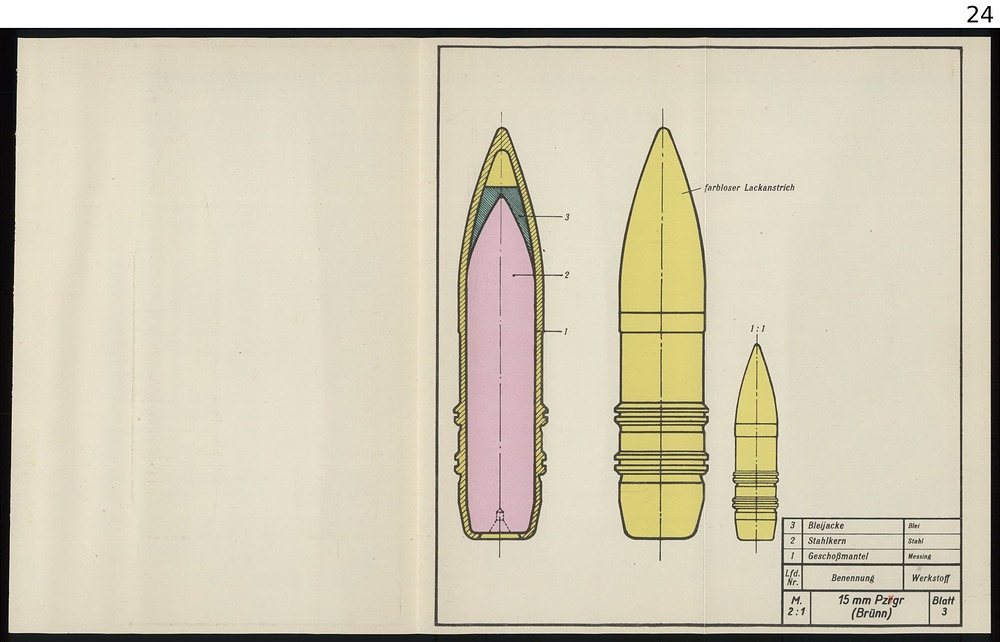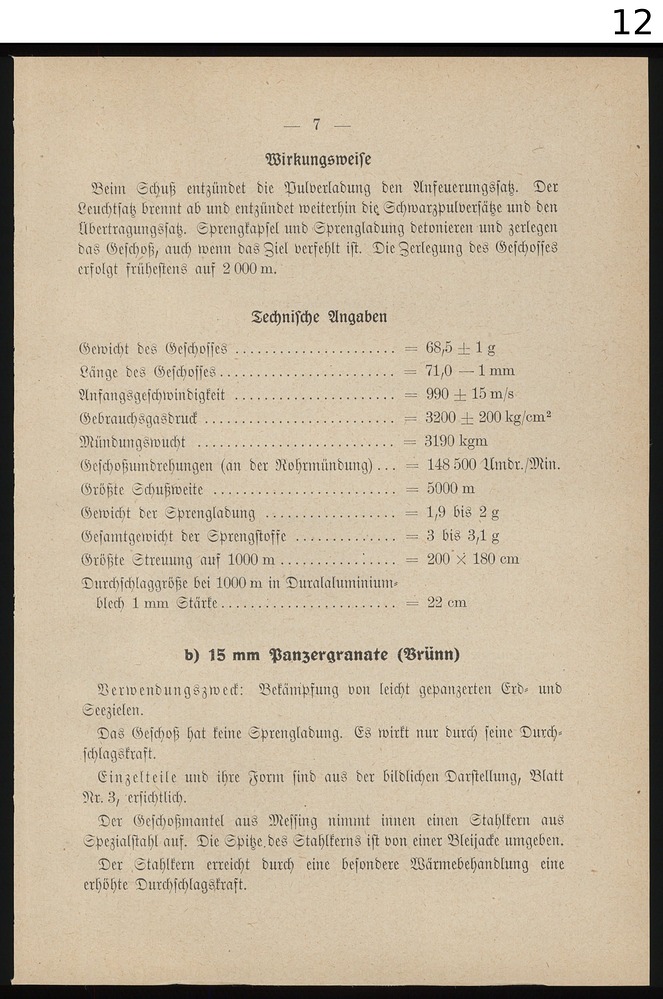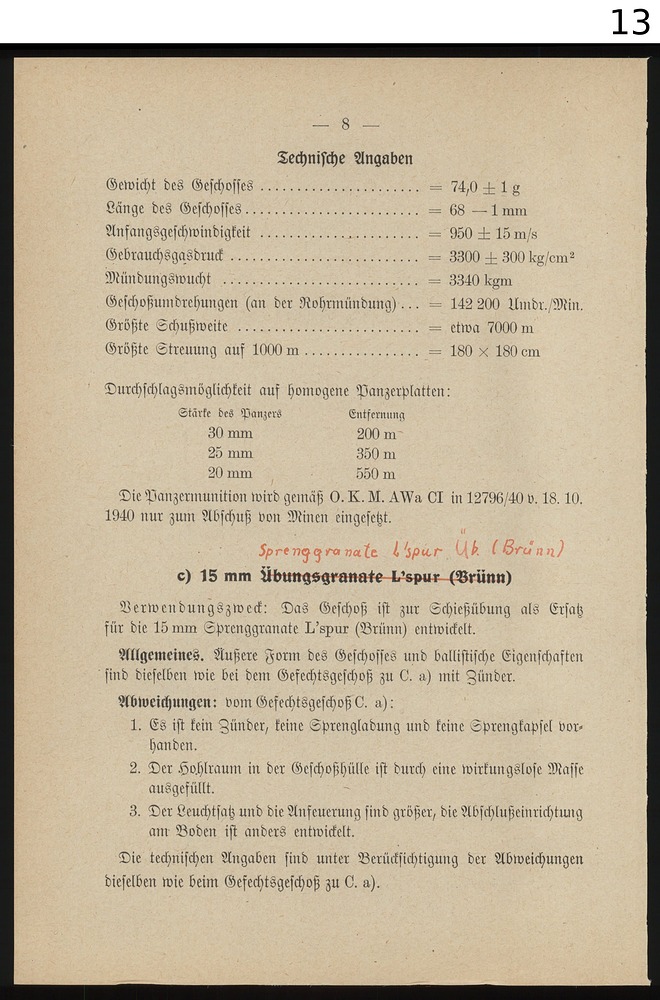Got any data on it? Besides what there is on the drawing.
Sadly not.
Okay.
I tried to replicate it in Fusion 360 in a “good enough” version just to see what weights it might have, and I got the following:
Steel core (regular steel) - 49.728 g
Lead cap (regular lead) - 4.423 g
Brass jacket (regular brass) - 22.762 g
Total projectile mass: 76.913 g
Design

It seems very much in line with other projectiles with the projectile mass of ~75 grams, albeit more towards the heavier side, but that could be a discrepancy from the sketch that was thrown together. What would be more interesting is if the lead cap would count as a regular cap, and improve angled penetration. That would be quite helpful I imagine.
Thats very nice. Out of curiosity, isnt it relatively bad for AP that the core is just ~50g? Compared to the full steel driving band german 15 mm Pzgr. AP-T where most of the 72g will be AP material?
I doubt the lead counts as a cap from what i heared. And it seems a bit small.
50g for a 75g projectile is actually quite a lot compared to smaller calibers.
.50cal and .30cal bullets tend to have steel cores around 50-60% of the projectile mass.
The core of course isn’t 15mm like the German 15mm AP but 13mm.
Perhaps, but I’m guessing they prioritized ballistics with the manufacturing means and resources they had, plus it would have been milder on the barrels reducing the wear and increasing barrel life. German rounds tend to be incredibly optimized with the trade-off that they cost more and/or requires more sophisticated manufacturing methods, while many other countries were satisfied with economical “good enough” rounds. Also to consider is that Germany gained a lot of experience from actively fighting, so they could tweak their designs with war-time expedience. Other countries, like Czechoslovakia, were either annexed or fell so fast that they didn’t have time to design, produce and field new ammunition types before it was over.
Lots of interwar technologies and designs met the same fate.
I think the original Czech offering might have been a tungsten core, but the British seem to only use steel cored ammo. That’s actually pretty close, core weight is given as 769-770 grains, projectile weight as 1160 +/- 10 grains. A lighter core might also explain why they have the muzzle velocity at 920m/s.
That’s gratifying to hear. I wasn’t sure how accurate my model would be but it seems it came pretty close, maybe a bit on the larger side but close enough. Thanks for bringing this to my attention!
I also checked what the core would’ve have weighed if it was made of tungsten and it came out as a whopping ~122 grams. I can see why tungsten is such a desirable metal.
Where I wrote “tungsten” I should have put “tungsten steel” which is unfortunately just a descriptor for a whole range of alloys. So maybe not quite that heavy, but still likely heavier than a hard steel core.
+1 wouldn’t complain about more low tier light tanks
we already have the hull in-game so sure why not?
+1
Similar to the Hispano and Polsten


